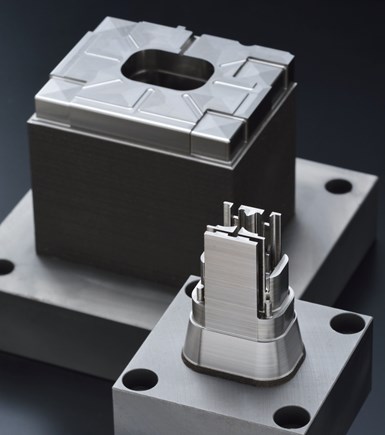Hybrid Metal 3D Printer Enables Quick-turn Prototyping
IMTS: Matsuura Machinery’s Lumex Avance hybrid metal 3D printers are said to enable lights-out production for highly accurate parts from metal powders.
Matsuura Machinery says its Lumex Avance lights-out metal 3D printers produce highly accurate parts from metal powders that are melted and sintered via a laser while surfaces are precisely milled.
The company says the hybrid metal 3D printer enables the ability to “grow” and fine mill a metal component in layers with complex internal features as the layers are added, such as conformal cooling and integrated porous venting — in most cases, eliminating the need for EDM. This is said to typically reduces overall build time and ensures a highly suitable surface finish. Added conformal cooling can also improve cycle times as much as 50% and mold gas venting can be optimized, the company says.
The solution is said to enable quick-turn prototyping producing a wide range of parts and low- to mid-volume production runs. Products and shapes that were said to be previously impossible to manufacture (including ultradeep ribs, 3D mesh, hollows, free-form surfaces and porous structures) can now be manufactured via the Lumex platform.
Related Content
-
Video: Laser Powder Bed Fusion Platform Designed for Safety, Ease of Use
One Click Metal’s compact metal 3D printing platform offers powder handling features to make this affordable system accessible and safe for many types of facilities. See one application in this video, filmed at IMTS 2024.
-
AM Workshop at IMTS: Succeeding With Powder Bed Fusion
A half-day event at the International Manufacturing Technology Show focuses on tactics for success for machine shops and other manufacturers preparing to embrace production 3D printing via powder bed fusion.
-
Video: Robot Machining Will Complement Robot DED
Robots can do additive manufacturing. Can they do hybrid manufacturing? Precision milling of metal using a robot offers this promise.













